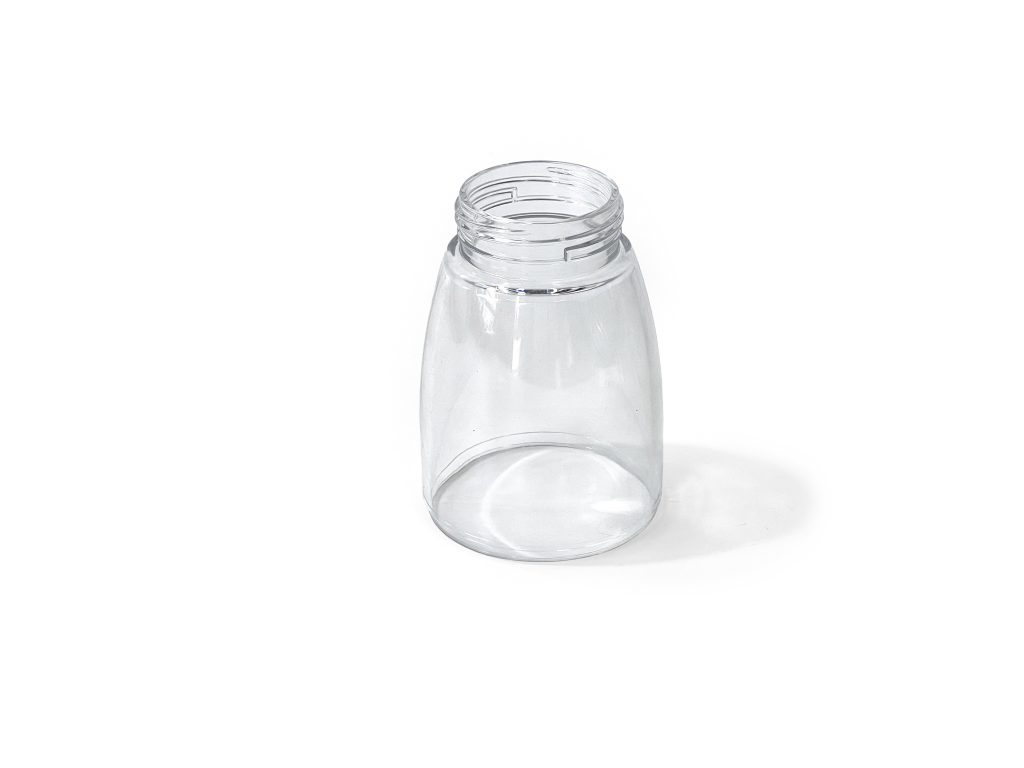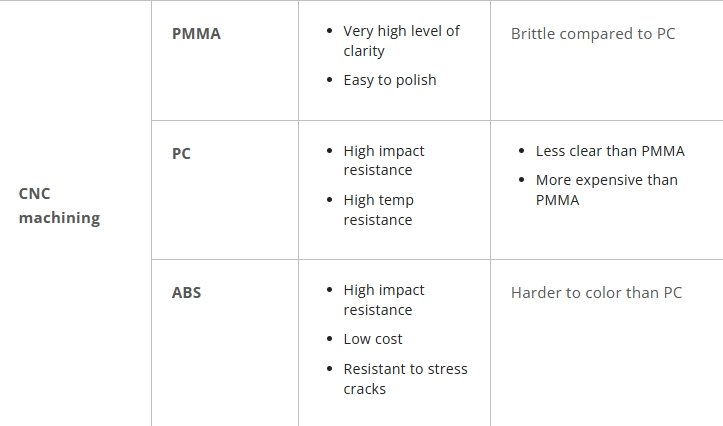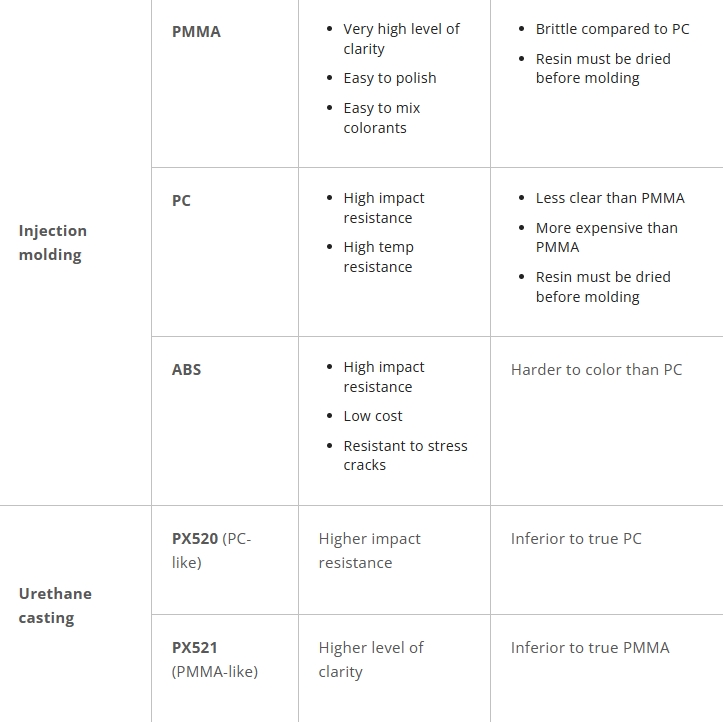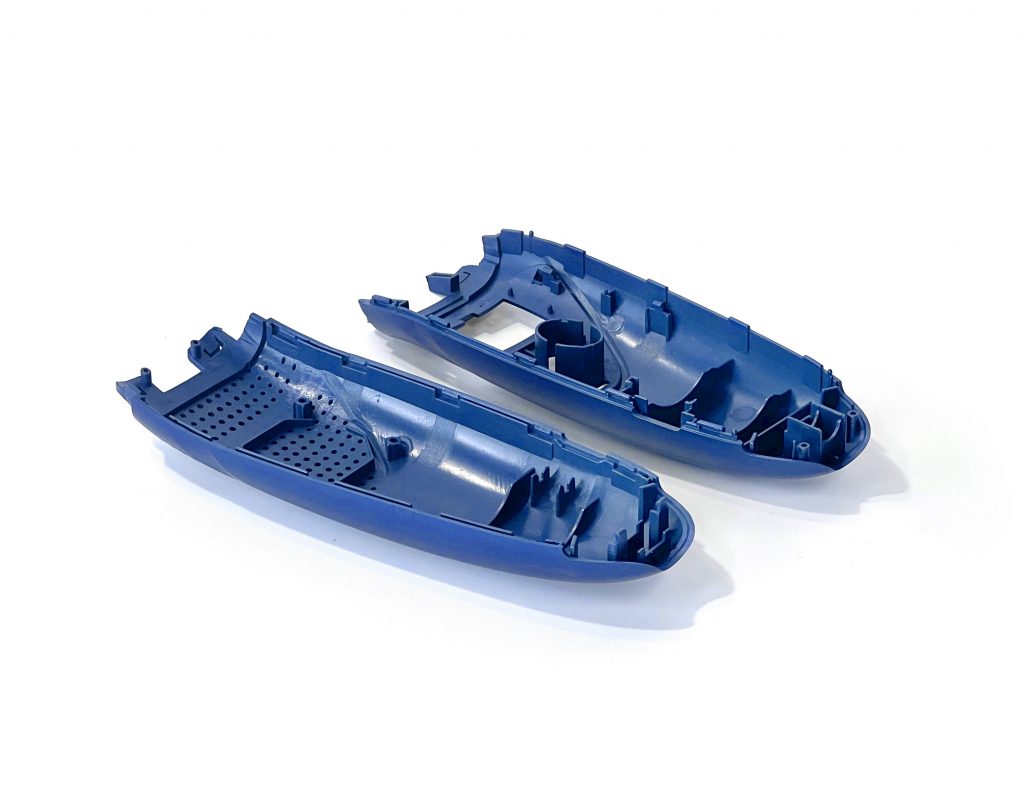Clear parts and prototypes have a huge variety of applications. Fortunately, they’re also fairly easy to make, with a wide range of materials and prototyping technologies at your disposal.
This article goes over the basics of transparent and translucent parts: why you might need them, what materials you can use, which manufacturing technologies are available, and other considerations like polishing and tinting your clear parts.

Why use transparent and translucent parts?
Product designers can desire clear parts for any number of reasons. Look around you and you’ll probably see at least one transparent or translucent manmade object, be that a glass window, a see-through container, a plastic tumbler, or a piece of food packaging.
In general, however, there are three (sometimes overlapping) reasons for making clear parts, and we’ll explain them here.
Remember that transparency means fully clear, so that one can see exactly what is behind the material, while translucency means partially clear, so that one can see light coming through the material or a blurred representation of what is behind the material.
What materials are available?
Several materials can be used to make transparent or translucent parts. These vary by the manufacturing process used.


How to make transparent and translucent parts
There are four main techniques for making transparent and translucent plastic parts, all of which are offered by Proto MFG. Each method has its own set of advantages and disadvantages, though CNC machining and rapid tooling / injection molding are generally better for end-use parts.
Urethane casting
Urethane casting, a process for making urethane parts using temporary silicone molds, is the best way to create 10–20 copies of a clear part, no matter its level of complexity. Like SLA, it does not produce strong parts, but it does produce excellent surface finishes.
Advantages:
Disadvantages:
CNC machining
CNC machining, a subtractive manufacturing process in which material is selectively removed from a blank, is the only way to achieve a prototype with perfect transparency, and it can also be used to make milky translucent parts from materials like DF23. CNC machining also produces super fine details if small cutters (R0.1mm, R0.05mm etc.) are used.
Learn more about acrylic machining.
Advantages:
Disadvantages:
Costly in large quantities
Injection molding
Injection molding, the process of injecting molten resin into a metal mold, is suitable for certain clear parts. Rapid tooling — making a low-cost aluminum mold — is suitable for 100+ parts, while production tooling is best when 10,000+ clear parts are required.
Advantages:
Disadvantages:
Other methods
Laser cutting or water jet cutting allows us to make parts with simple geometry. With either of these methods, we can make parts from sheets of clear material which might be too expensive for CNC machining or urethane casting, or which aren’t mechanically suitable for injection molding.
How to polish and add color to clear parts
Polish
When making clear parts, post-processing is necessary to achieve the required level of transparency. In general, polishing after manufacture is the best way to make SLA and CNC parts fully transparent.
For CNC machined materials, especially PMMA, polishing can greatly increase clarity, partly because acrylic is highly resistant to the small scratches that can otherwise be caused by polishing equipment. Polishing approaches include buffing, flame polishing (for standard / non-critical parts), and optical machining. PC is more vulnerable to scratches, so vapor polishing is used to increase clarity.
Color
In addition to polishing, we can introduce color to clear parts, usually for aesthetic reasons. With injection molded or urethane cast parts, we can facilitate self-texture and self-color during the molding stage by adding colorants and other additives. Alternatively (or additionally), we can add tints or coatings of paint after the molding process, which makes it possible to have two colors on the final part.

For CNC machined clear parts, we can use techniques like sandblasting, tinting, or texture painting to adjust the appearance. An excellent aspect can be achieved on many clear parts using a tinting process. Possible colors include red, yellow, blue, and orange. (Some colors like, gray, are harder to control.) Painting is another simple option, but it can produce issues such as orange peel: an undesirable bumpy surface texture.